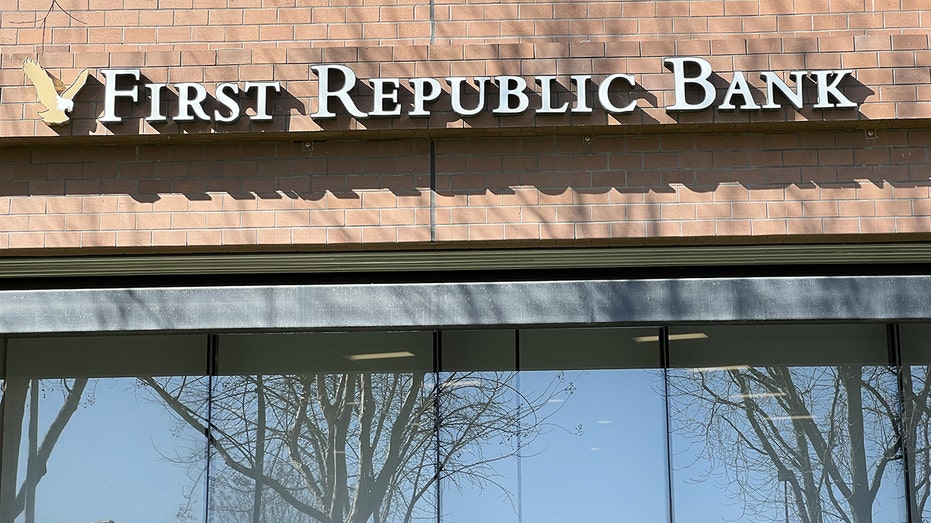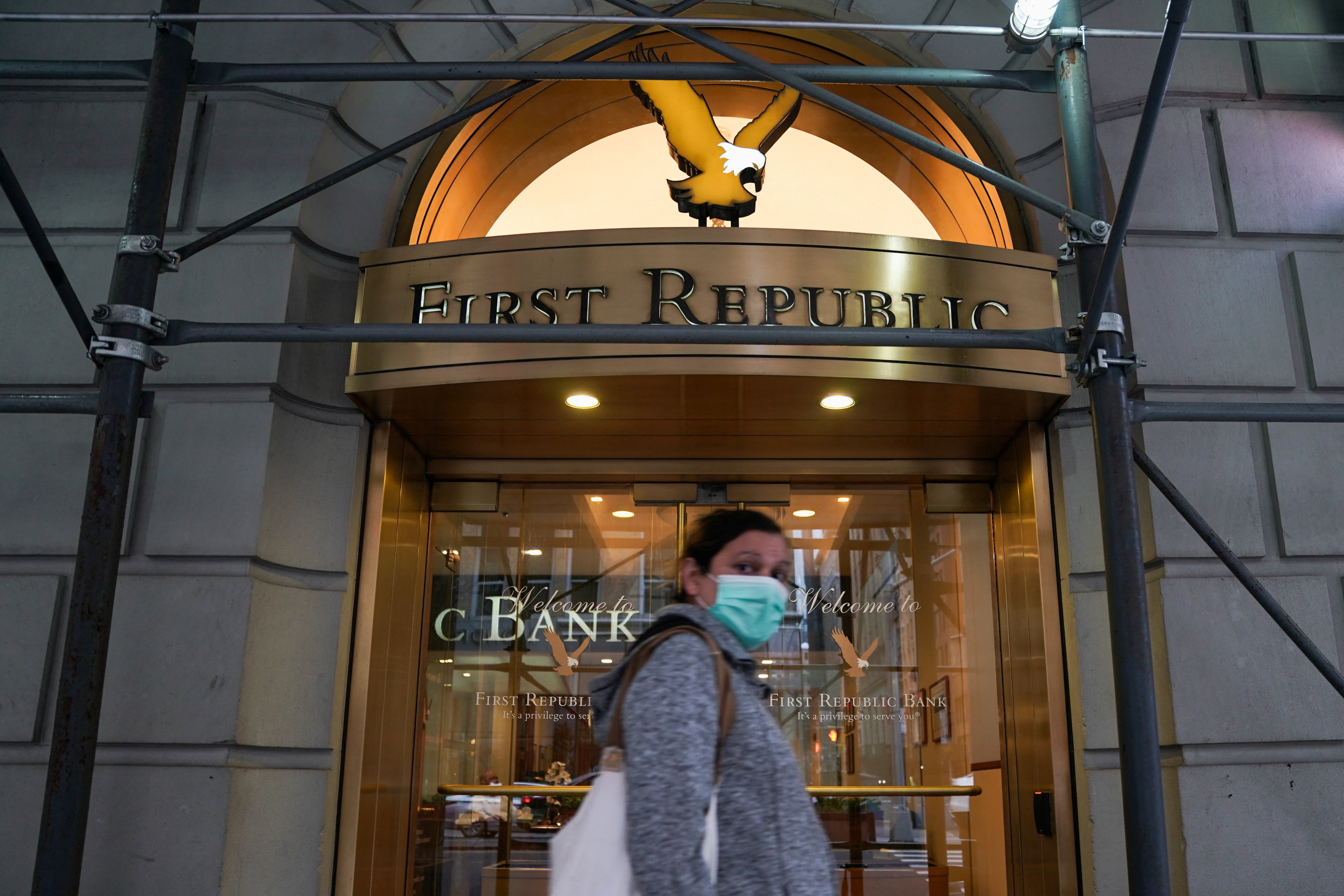First Republic shares continue to slide despite $30B cash infusion
Investor fears over First Republic Bank continue despite Wall Street rescue deal
Regulators likely played 'behind the scenes' role in First Republic's big bank bailout
The Wall Street Journal chief economics correspondent Nick Timiraos discusses the macro impact from America's biggest banks bailing out First Republic Bank.
First Republic Bank stock continued its free fall on Friday despite an unprecedented rescue deal announced the previous day by nearly a dozen of the nation's biggest banks
The $30 billion cash infusion initially brought some relief to shares of the San Francisco-based lender, but that investor optimism appears to be short-lived.
First Republic saw its shares plummet about 24% in the first few hours of trading on Friday, leading losses among regional banks. The stock – which hovered around $115 per share on March 8 – was trading around $26 per share on Friday, the lowest level in a decade and down about 77% from just one week ago.
ONE YEAR INTO ITS INFLATION FIGHT, THE FED FACES MURKY FUTURE
| Ticker | Security | Last | Change | Change % |
|---|---|---|---|---|
| FRC | NO DATA AVAILABLE | - | - | - |
| JPM | JPMORGAN CHASE & CO. | 329.17 | +3.24 | +0.99% |
| BAC | BANK OF AMERICA CORP. | 56.25 | +0.28 | +0.50% |
| WFC | WELLS FARGO & CO. | 95.30 | +0.83 | +0.88% |
| CITI | NO DATA AVAILABLE | - | - | - |
As part of the deal, JPMorgan Chase, Citigroup, Bank of America and Wells Fargo will each contribute $5 billion; Goldman Sachs and Morgan Stanley will deposit about $2.5 billion each, according to a news release from the banks. Truist, PNC, U.S. Bancorp, State Street and Bank of New York Mellon will kick in about $1 billion apiece.
"This action by America’s largest banks reflects their confidence in First Republic and in banks of all sizes, and it demonstrates their overall commitment to helping banks serve their customers and communities," the group said in a joint statement.
Federal regulators lauded the move, which came after several brutal and volatile days for First Republic shares.
Customers yanked billions in deposits out of First Republic, prompting the bank to shore up its finances with additional funding from the Fed and JPMorgan. That first cash infusion gave the bank – which boasts $213 billion in assets – roughly $70 billion in unused liquidity.
First Republic, which has more than 80 branches across the U.S., contacted customers over the weekend in an attempt to reassure them about its health.
SILICON VALLEY BANK RECKLESS WITH RISK, ESG PUSH: STATE FINANCIAL OFFICERS

A First Republic Bank branch in San Ramon, California, on March 16, 2023. (Smith Collection / Gado / Getty Images / Getty Images)
"In light of recent industry events, the last few days have caused uncertainty in the financial markets," executives wrote in an email to clients obtained by FOX Business. "We want to take a moment to reinforce the safety and stability of First Republic, reflected in the continued strength of our capital, liquidity and operations."
Despite that, S&P Global Ratings and Fitch Ratings cut First Republic to junk status earlier this week amid concern that clients will pull holdings from the lender. Fitch Ratings said on Friday that it will "continue to assess" First Republic's status following the $30 billion deposit commitment.
"Fitch will continue to assess the situation with the plan of taking rating action within the next few business days," it said in a statement. "Fitch still views FRC’s franchise and liquidity profile as significantly weakened since early last week and this is reflected in the current rating level."
SILICON VALLEY BANK COMMITTED ‘ONE OF THE MOST ELEMENTARY ERRORS IN BANKING,’ LARRY SUMMERS SAYS
The concerns at First Republic and other midsize regional banks began after the historic failure of Silicon Valley Bank – the 16th largest lender in the country – last week following a liquidity crunch. It marked the largest U.S. bank failure since the global financial crisis in 2008.
SVB, which largely catered to tech companies, venture capital firms and high-net-worth individuals, saw a huge boom in deposits during the pandemic, with its assets surging from $56 billion in June 2018 to $212 billion in March 2023. The bank responded by investing a large chunk of that cash into long-term U.S. Treasury bonds and other mortgage-backed securities. However, that strategy backfired when the Fed embarked on the most aggressive interest-rate hike campaign since the 1980s, and the value of those securities tumbled.
That coincided with a decline in available funding for startups, which started drawing down more of their money to cover their expenses, forcing the lender to sell part of its bond holds at a steep $1.8 billion loss. When depositors realized that SVB was in a precarious financial situation, a bank run ensued.





















